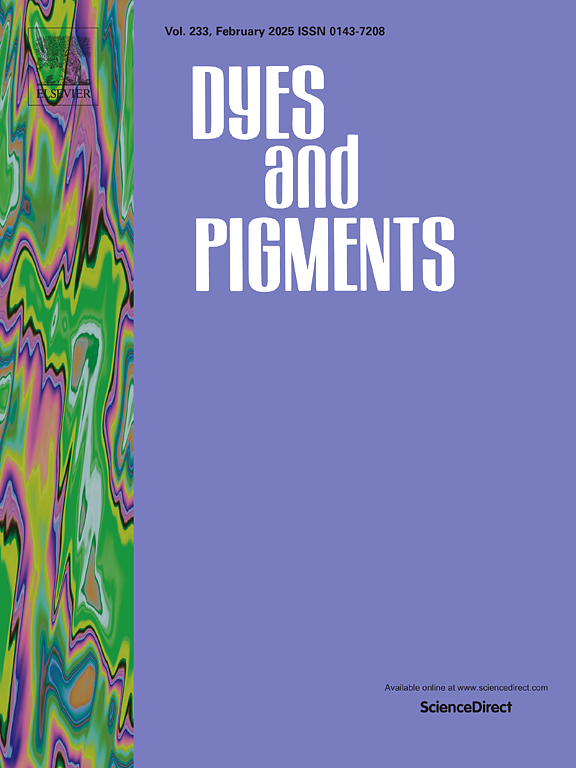Development of highly efficient meridional Ir(III) complexes in solution-processed green phosphorescent organic light-emitting diodes
IF 4.1
3区 工程技术
Q2 CHEMISTRY, APPLIED
引用次数: 0
Abstract
Two highly effective homoleptic meridional (mer) isomer-based emitters Ir(III) complexes, mer-MECF and mer-MEMO were synthesized for use in solution-processed phosphorescent organic light-emitting diodes (PHOLEDs). Both Ir(III) complexes contained a (2-ethylhexyl group) and different functional groups, such as trifluoromethyl (-CF3) and methoxy (-OCH3) and a substituted amide-bridged phenylpyridine unit, which was utilized as a main ligand. Thermal, photochemical, electroluminescence (EL) and electrochemical properties performances were examined. Interestingly, both complexes exhibited a structureless green light emission spectrum, high photoluminescence quantum yields (PLQYs) and excellent solubility in organic solvents. The solution-processed PHOLED containing mer-MEMO as dopant exhibited an excellent external quantum efficiency of 16.5 % and a current efficiency 54.3 cd A−1. The electron transport layer (ETL) optimized device containing mer-MECF as dopant had an excellent external quantum efficiency of 21.1 % and a current efficiency 71.4 cd A−1. The study shows that the described amide-bridged mer Ir(III) complexes have potential use as solution-processed PHOLEDs.

求助全文
约1分钟内获得全文
求助全文
来源期刊

Dyes and Pigments
工程技术-材料科学:纺织
CiteScore
8.20
自引率
13.30%
发文量
933
审稿时长
33 days
期刊介绍:
Dyes and Pigments covers the scientific and technical aspects of the chemistry and physics of dyes, pigments and their intermediates. Emphasis is placed on the properties of the colouring matters themselves rather than on their applications or the system in which they may be applied.
Thus the journal accepts research and review papers on the synthesis of dyes, pigments and intermediates, their physical or chemical properties, e.g. spectroscopic, surface, solution or solid state characteristics, the physical aspects of their preparation, e.g. precipitation, nucleation and growth, crystal formation, liquid crystalline characteristics, their photochemical, ecological or biological properties and the relationship between colour and chemical constitution. However, papers are considered which deal with the more fundamental aspects of colourant application and of the interactions of colourants with substrates or media.
The journal will interest a wide variety of workers in a range of disciplines whose work involves dyes, pigments and their intermediates, and provides a platform for investigators with common interests but diverse fields of activity such as cosmetics, reprographics, dye and pigment synthesis, medical research, polymers, etc.
 求助内容:
求助内容: 应助结果提醒方式:
应助结果提醒方式:


